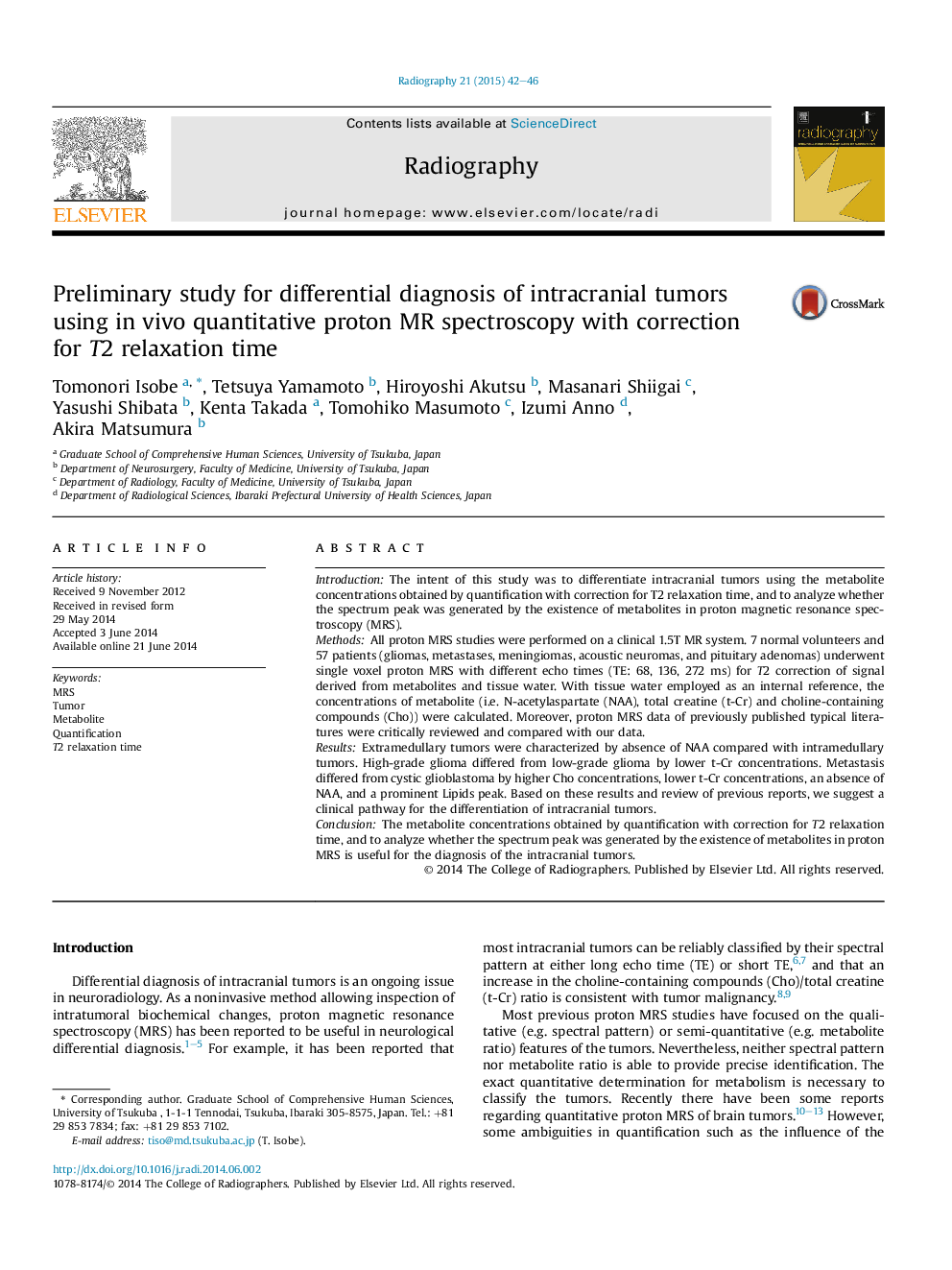| Article ID | Journal | Published Year | Pages | File Type |
|---|---|---|---|---|
| 2738351 | Radiography | 2015 | 5 Pages |
IntroductionThe intent of this study was to differentiate intracranial tumors using the metabolite concentrations obtained by quantification with correction for T2 relaxation time, and to analyze whether the spectrum peak was generated by the existence of metabolites in proton magnetic resonance spectroscopy (MRS).MethodsAll proton MRS studies were performed on a clinical 1.5T MR system. 7 normal volunteers and 57 patients (gliomas, metastases, meningiomas, acoustic neuromas, and pituitary adenomas) underwent single voxel proton MRS with different echo times (TE: 68, 136, 272 ms) for T2 correction of signal derived from metabolites and tissue water. With tissue water employed as an internal reference, the concentrations of metabolite (i.e. N-acetylaspartate (NAA), total creatine (t-Cr) and choline-containing compounds (Cho)) were calculated. Moreover, proton MRS data of previously published typical literatures were critically reviewed and compared with our data.ResultsExtramedullary tumors were characterized by absence of NAA compared with intramedullary tumors. High-grade glioma differed from low-grade glioma by lower t-Cr concentrations. Metastasis differed from cystic glioblastoma by higher Cho concentrations, lower t-Cr concentrations, an absence of NAA, and a prominent Lipids peak. Based on these results and review of previous reports, we suggest a clinical pathway for the differentiation of intracranial tumors.ConclusionThe metabolite concentrations obtained by quantification with correction for T2 relaxation time, and to analyze whether the spectrum peak was generated by the existence of metabolites in proton MRS is useful for the diagnosis of the intracranial tumors.
